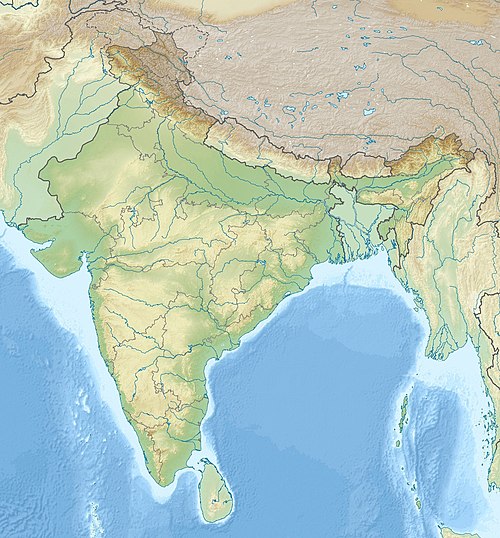Mount Tempü
Mount Tempü (also known as Mount Iso) is a peak rising at the mountainous border of Manipur and Nagaland in India. With a height of 2994 m above sea level, Tempü is the highest peak in present day Indian state of Manipur.
| Mount Tempü | |
|---|---|
 Mount Tempü Location in Manipur, India near the border with Nagaland  Mount Tempü Mount Tempü (India) | |
| Highest point | |
| Elevation | 2,994 m (9,823 ft) |
| Coordinates | 25.530681°N 94.084934°E |
| Geography | |
| Location | Viswema, India |
| Climbing | |
| Easiest route | Hiking |
Geography
Mount Tempü is located at an altitude of 2994m above mean sea level.[1] The peak is located in the western part of Viswema—the starting point of the climb. The peak is surrounded by other Naga communities such as Mao Nagas and Maram Nagas. Occasionally the peak is snow covered during the winter months. On clear day one can catch a glimpse of Loktak Lake in the distance.
Access
Transportion
The Asian Highway 1 and also the NH-2 passes through its foothills. The nearest airport is Dimapur Airport at Dimapur near the Assam border about 96 kilometres (60 miles) away from Viswema while the Bir Tikendrajit International Airport is located about 120 kilometres (75 miles) south of Viswema.
Climbing route
The peak can be access from the same route to Dzüko Valley that is from the foothills of Viswema. Here one can hike or take a ride to the rest house above Teyozwü hill. From here one has to climb forty minutes to the top of the mountain(Khiyoke). Here the path on the left leads to Mount Tempü whereas on the right leads to Dzüko Valley. Mount Tempü is about two hours climb from Khiyoke.
See also
References
- Mekr0, Y. (2014) Rocks of Nagaland. Mittal Publications. p 80.